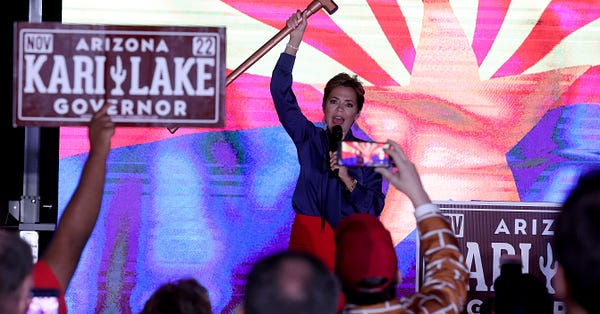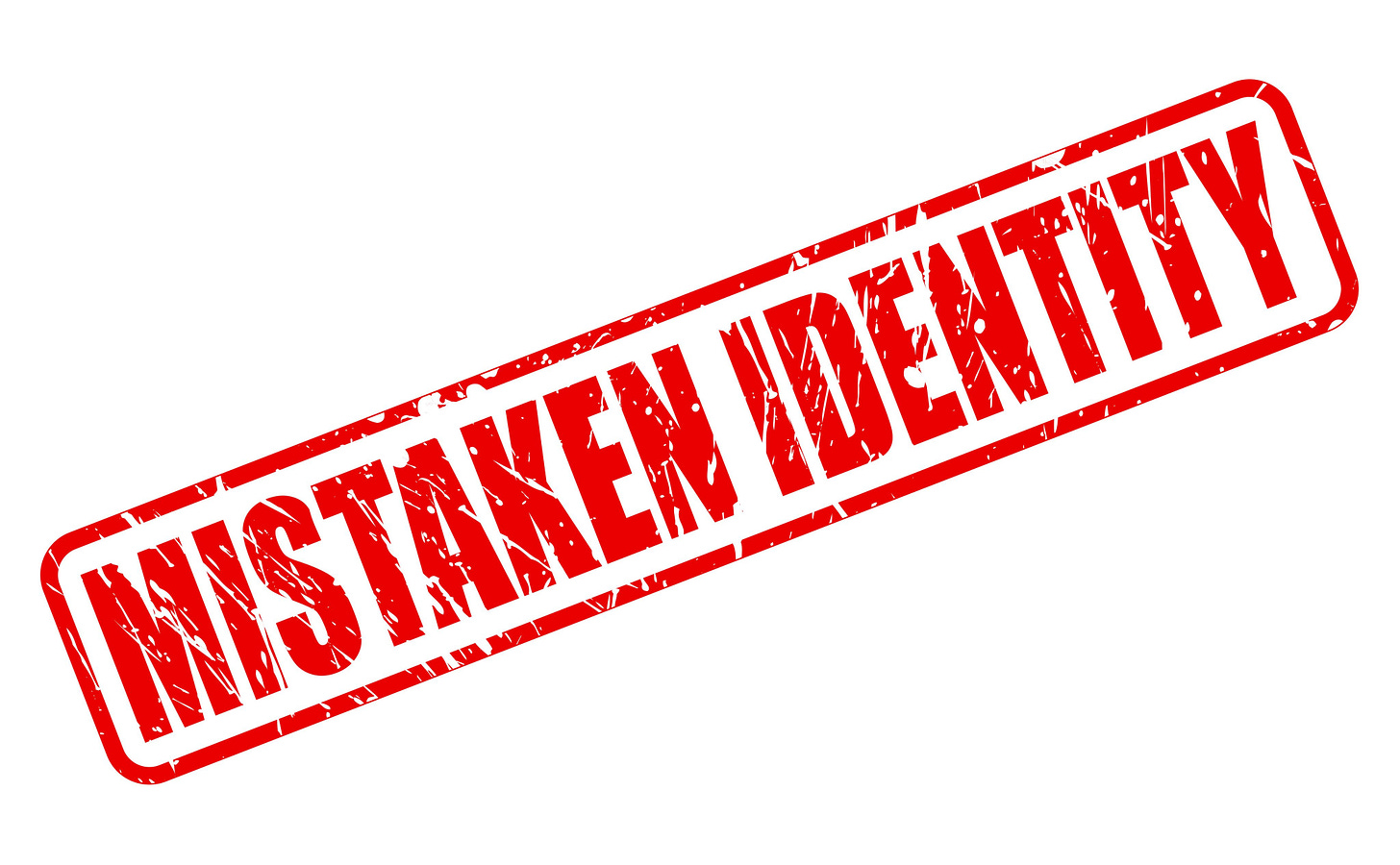E-Pluribus | October 31, 2022
When a liberal looks conservative to liberals; Affirmative Action and real diversity; and why the left is so quiet about Britain's new prime minister, Rishi Sunak.
A round-up of the latest and best writing and musings on the rise of illiberalism in the public discourse:
Kat Rosenfield: Why I Keep Getting Mistaken for a Conservative
What is a conservative and what is a liberal? To some, being one means never agreeing with someone on the other side. Kat Rosenfield, who considers herself a “lifelong liberal,” writes at National Review that her liberal cred is often questioned because she refuses to simply go along with the latest liberal cause, whatever that may be.
[T]his is why conservatives so often mistake me for one of their own: not because I argue for right-wing policies or from a right-wing perspective, but because progressives are often extremely, publicly mad at me for refusing to parrot the latest catechism and for criticizing the progressive dogmas that either violate my principles or make no sense. I look like a friend of the Right only because the Left wants to make me their enemy — and because I can’t bring myself to do the requisite dance, or make the requisite apologies, that might get me back in the Left’s good graces.
On that front, I am not alone. There’s a loose but growing coalition of lefties out there, artists and writers and academics and professionals, who’ve drawn sympathetic attention from conservatives after being publicly shamed out of the progressive clubhouse (that is, by the type of progressive who thinks there is a clubhouse, which is of course part of the problem). It’s remarkably easy these days to be named an apostate on the left. Maybe you were critical of the looting and rioting that devastated cities in the wake of George Floyd’s murder by police in 2020. Maybe you were skeptical of this or that viral outrage: Covington Catholic, or Jussie Smollett, or the alleged racial abuse at a BYU volleyball game that neither eyewitness testimony nor video evidence could corroborate. Maybe you were too loud about the continued need for due process in the middle of #MeToo. Maybe you wouldn’t stop asking uncomfortable questions about the proven value of certain divisive brands of diversity training, or transgender surgeries for kids, or — come the pandemic — masking. Maybe you kept defending the right to free speech and creative expression after these things had been deemed “right-wing values” by your fellow liberals.
Read the whole thing.
Kyle Peterson: Affirmative Action Mocks Ethnic Diversity
The current case being argued at the Supreme Court will likely impact long standing affirmative action programs nationwide. At the Wall Street Journal, Kyle Peterson explains how, whatever the good intentions, affirmative action has never made sense in terms of true diversity, and frankly, hasn’t even made sense with regards to racial or ethnic diversity either.
Mr. Bernstein, 55, is the author of a recent book, “Classified,” that traces the haphazard codification of the federal government’s racial labels. “We created these classifications in 1977 in a very different America, right, that was primarily black-white,” he says. “Now we have all these other groups, and we have much more division within the groups, and we’ve barely changed them at all.”
The decisive player in the ’70s was the Ad Hoc Committee on Racial and Ethnic Definitions, set up under the Federal Interagency Committee on Education. A task force with three interested federal workers—Mexican-American, Puerto Rican and Cuban-American—debated a Spanish-language label. The eventual result was a document with a title only a hardened bureaucrat could love: Statistical Policy Directive No. 15.
Issued by the Office of Management and Budget in 1977, Directive 15 set definitions for the racial categories we mostly know today: white, black, Asian and Native American, with an ethnicity option for people of Hispanic heritage, who can be any race. In 1997 a Native Hawaiian and Pacific Islander grouping was split off. A complaint from Hawaiians, which echoes today, was that colleges treated them as Asians.
In a country that’s far more diverse five decades after Directive 15, its labels show up everywhere from college applications to clinical trials. The problem is that these blunt categories are arbitrary and historically contingent. “Asians are supposed to have descent from the original peoples of Asia, whatever that means,” Mr. Bernstein says. That grouping covers half the world’s population and a dizzying number of ethnicities. Yet according to the feds, Asia ends at the Pakistan border. Pakistani-Americans, like Japanese-Americans, are classified as Asian. Afghan-Americans are officially white.
Read it all here.
Andrew Sullivan: The British Barack Obama?
When it comes to policies, Britain’s new Conservative Party prime minister Rishi Sunak is no Barack Obama. But writing on his Substack, Andrew Sullivan draws the comparison anyway, focusing on the remarkable changes that both Britain and America have undergone that make both Sunak’s and Obama’s achievements as leaders of their respective countries so notable.
The reason Obama’s election was a radical moment was not so much policy as the arc of history: a country that began with the evil of slavery eventually came to abolish it in a horrible Civil War, to regress again in the century afterward, and then to pass civil rights laws, and ultimately to elect a black president — and then reelect him. Even though Obama was not a descendant of slaves, it was his race and history that gave his ascent a real gravity. It mattered. I will never forget when, in a visit to the White House, Obama showed me an original copy of the Gettysburg Address. I felt not a little overwhelmed that America’s first black president was showing it to me.
Britain never tolerated slavery on its own territory and even pioneered its abolition, (though was obviously deeply complicit in it elsewhere in the world). But it was defined by empire in the way that America was defined by slavery, and nothing defined that empire more than India. (Among the ironies, it was the first ethnic-minority prime minister, Benjamin Disraeli, who clinched the acquisition for Queen Victoria.)
And it is simply a remarkable fact that a grandson of that distant colonized country now runs the former colonial power. Imagine what Gandhi might have thought of that. Or Churchill for that matter. Sunak’s imperial heritage is actually wider: he has roots in Pakistan as well, and his grandparents lived in Tanzania (then Tanganyika) in British-run Africa, before they immigrated to the UK. His father, just like Obama’s, was born in Kenya.
[ . . . ]
Sunak is, for example, an openly practicing and proud Hindu. He lit Diwali lights around 11 Downing Street and took his oath on the Bhagavad Gita. That’s not someone running from his heritage. And he is also a Brexiteer from conviction, and, unlike Truss, a fiscal conservative who’s a realist about what can and can’t be done in a period of extraordinary economic stress for Brits and massive post-Covid debt.
All of this suggests something too many liberals have forgotten. These countries of alleged “white supremacy” have less racism than almost anywhere else in the world. It is hard to imagine a non-white president of France or Germany or Italy — let alone China or Russia or anywhere in Central Europe. It is hard to think of another empire that was deliberately unwound by its architects, and who then, within two generations, installed the grandson of former colonial subjects to its most powerful office. And Obama, of course, was twice elected with more heartland white support than Hillary Clinton.
Read it all.
Around Twitter
Steven Pinker and Peter Boghossian comment on a new piece by Sarah Longwell at Persuasion, “The New Nihilists”:




Robert Reich: My oligarchs are better than your oligarchs!







And finally, Halloween is about dressing up as something scary . . . does anyone have a spare Government Silencing Speech costume?








